Camshaft
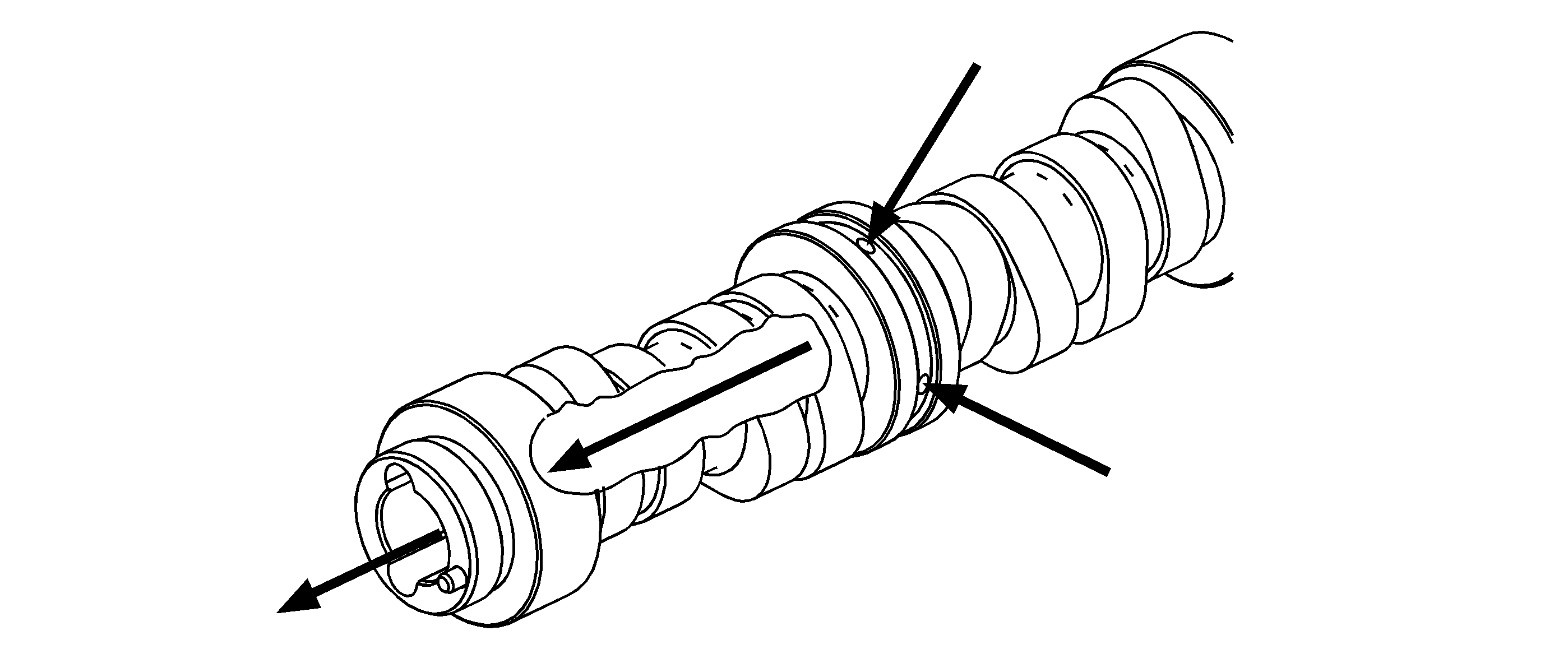
The camshaft is designed to provide a lubrication path for pressurized engine oil to flow to the camshaft position (CMP) actuator. Pressurized engine oil enters the camshaft at bearing journal location number 2. Oil travels through the camshaft, out the front, and into the CMP actuator solenoid valve.
CMP Actuator Solenoid Valve
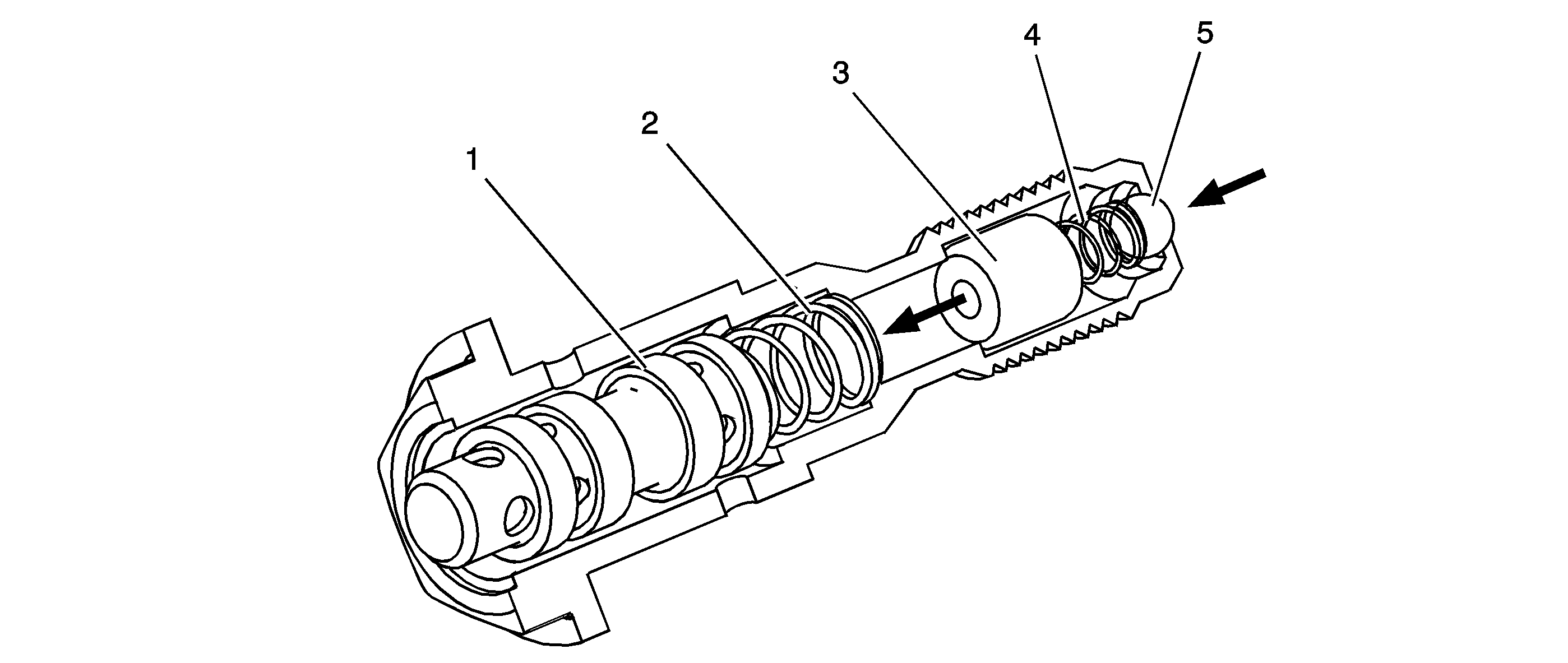
The CMP actuator solenoid valve consists of a housing, spool valve (1), spool return spring (2), oil filter (3), inlet check ball return spring (4), and inlet check ball (5). Pressurized engine oil enters the valve and travels through the filter to the spool. Spool position is controlled by the CMP magnet and engine control module (ECM). When the spool is moved to the proper position, oil flow is directed through the valve and into the CMP actuator assembly. The CMP solenoid valve is a torque-to-yield design and should be replaced each time it is removed.
CMP Actuator Magnet
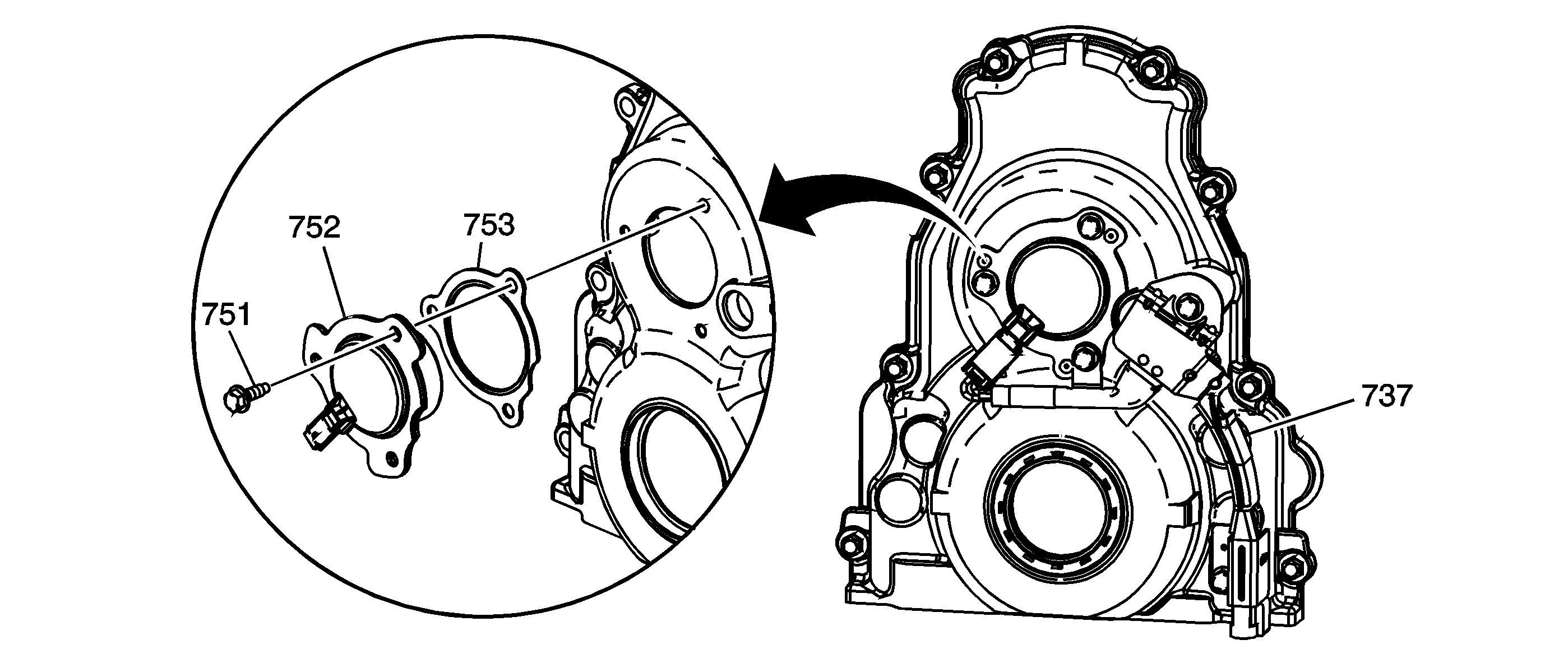
The CMP actuator magnet (752) is located in the engine front cover and is sealed by a gasket (753). The CMP actuator magnet is controlled by a 12-volt 150 Hz pulse width 0-100 percent duty cycle signal from the ECM. When energized, the solenoid uses electromagnetic force on the magnet pintle to position the spool valve of the CMP solenoid valve.
CMP Actuator
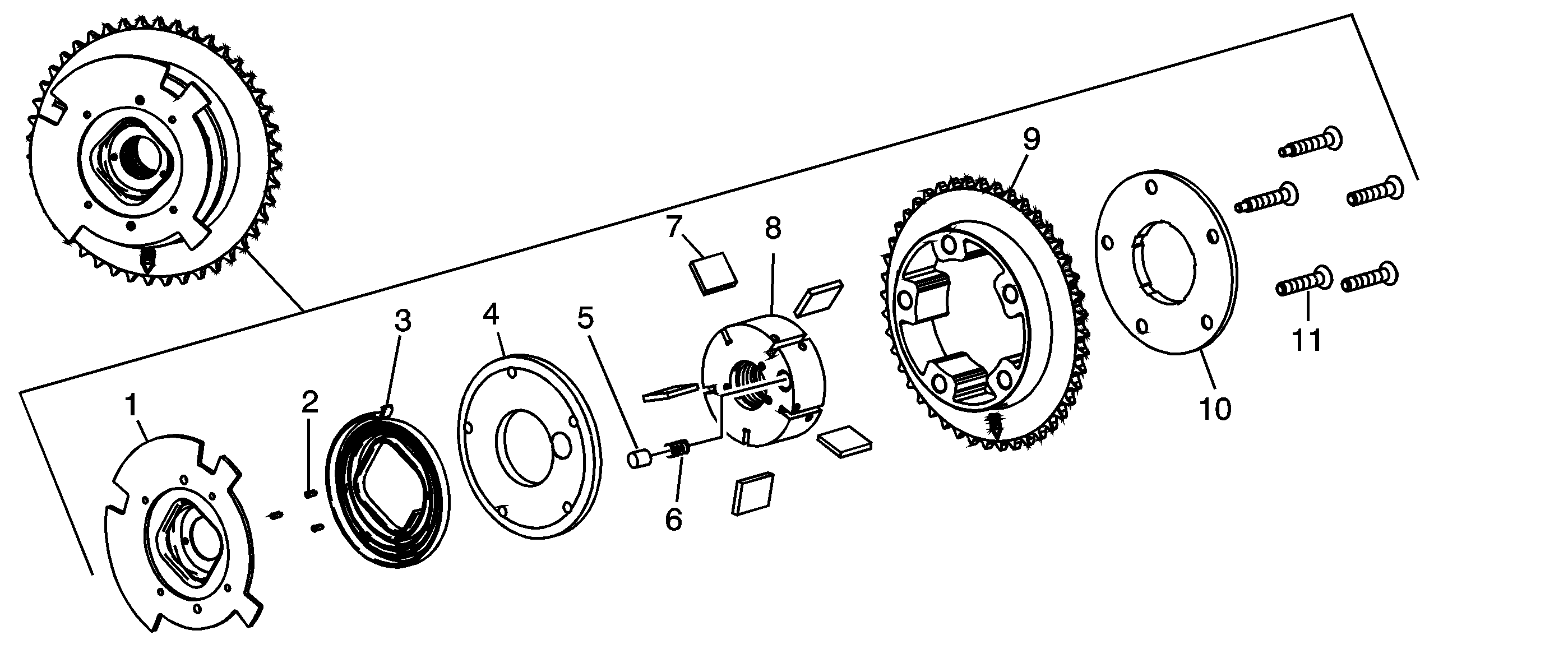
The CMP actuator is a vane type design that hydraulically changes angle or timing of the camshaft relative to crankshaft position. The CMP actuator allows earlier or later intake and exhaust valve opening during the 4-stroke engine cycle. The CMP actuator cannot vary the duration of valve opening or valve lift. The CMP actuator is to be serviced as an assembly. For system operation, refer to Camshaft Actuator System Description.
The CMP actuator consists of the CMP reluctor wheel (1), wheel retaining pins (2), return spring (3), front cover (4), park position pin (5), park position pin spring (6), vanes and vane springs (7), rotor (8), housing with chain sprocket (9), sealing cover/thrust plate (10), and bolts (11).
CMP System Operation
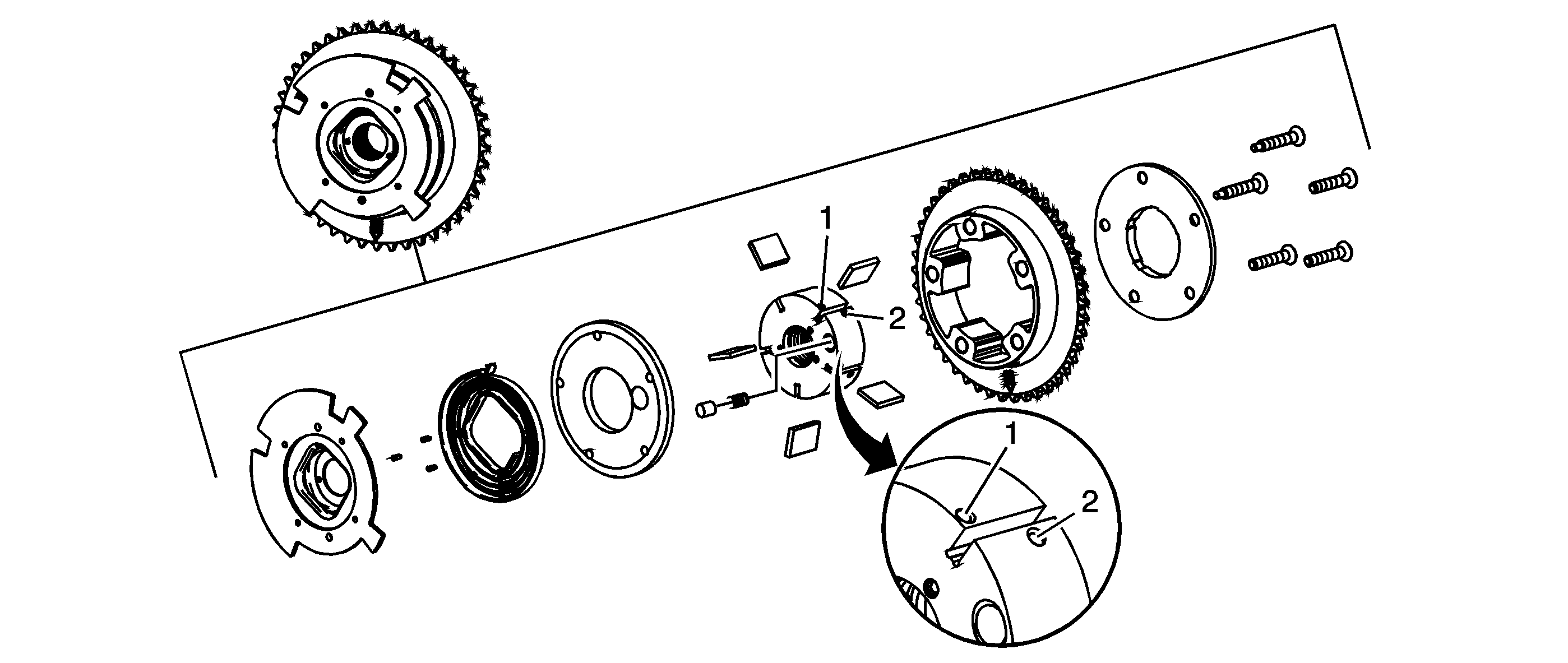
A CMP actuator dynamically changes valve timing events relative to piston timing by controlling camshaft position. This is sometimes referred to as variable valve timing or camshaft phasing. Variable valve timing or camshaft phasing does not change duration or lift.
| • | By advancing camshaft timing, an improvement in low end torque can be achieved. |
| • | By retarding camshaft timing slightly, an improvement in high end power can be achieved. |
| • | By retarding camshaft timing significantly, an improvement in light load fuel economy can be achieved. |
There are 5 cavities divided by vanes within the CMP actuator.
| • | When oil is directed to the advance cavities (1), the camshaft timing is advanced. |
| • | When oil is directed to the retard cavities (2), the camshaft timing is retarded. |
| • | When oil is directed to both cavities, the camshaft is held stationary. |

The 6.0L L76 and 6.2L L92 CMP actuator has a 62 degree range of authority. With the engine not running and no engine oil pressure to the CMP actuator, the high tension spring positions camshaft timing at the 17 degree advanced park position. During normal engine operation and based on performance requirements, the ECM may adjust camshaft timing, as required, within a range from 17 degrees advanced to 45 degrees retard.
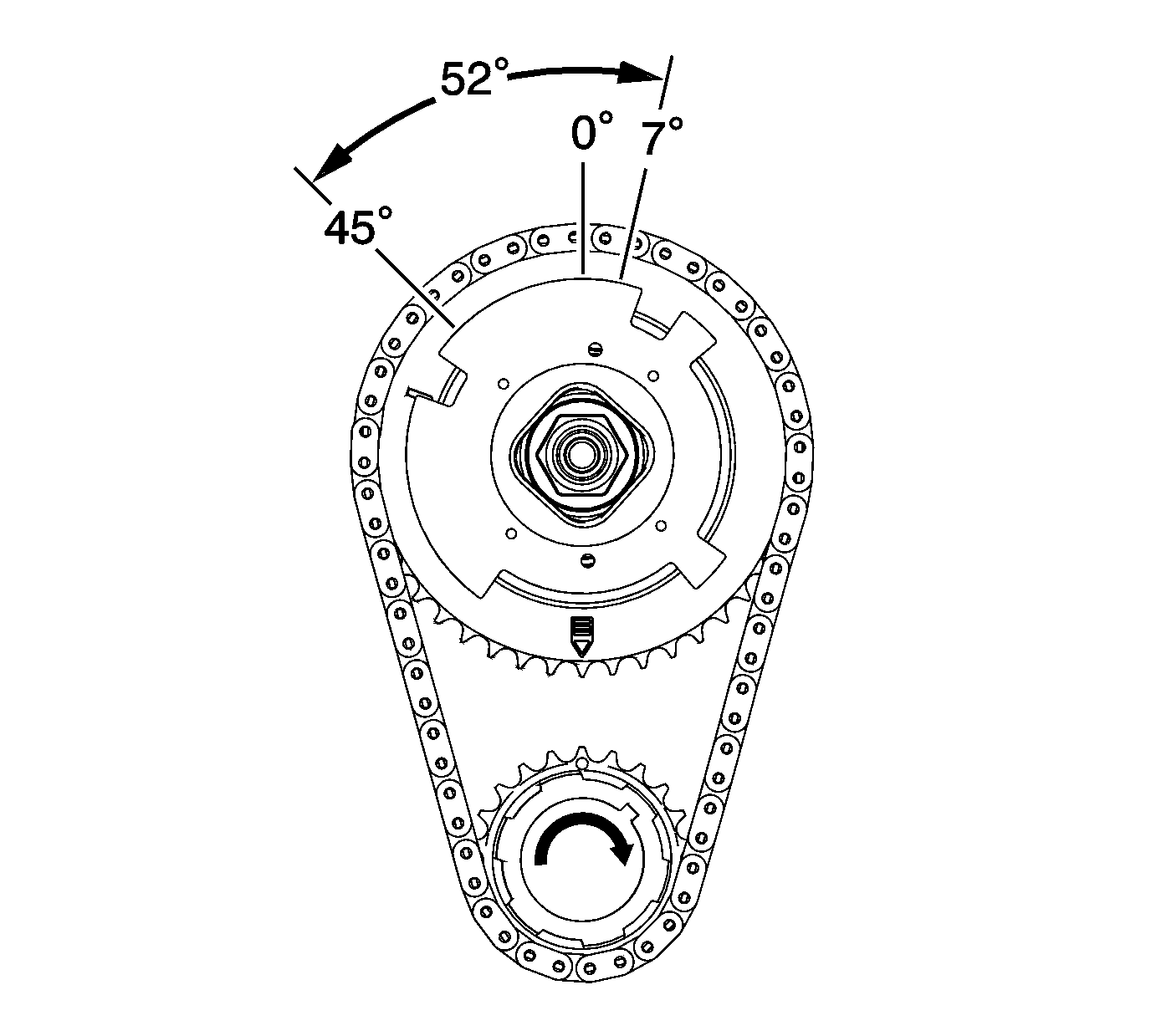
The 6.0L LY6 CMP actuator has a 52 degree range of authority. With the engine not running and no engine oil pressure to the CMP actuator, the high tension spring positions camshaft timing at the 7 degree advanced park position. During normal engine operation, and based on performance requirements, the ECM may adjust camshaft timing, as required, within a range from 7 degrees advanced to 45 degrees retard.
CMP System Lubrication Flow and Actuator Operation
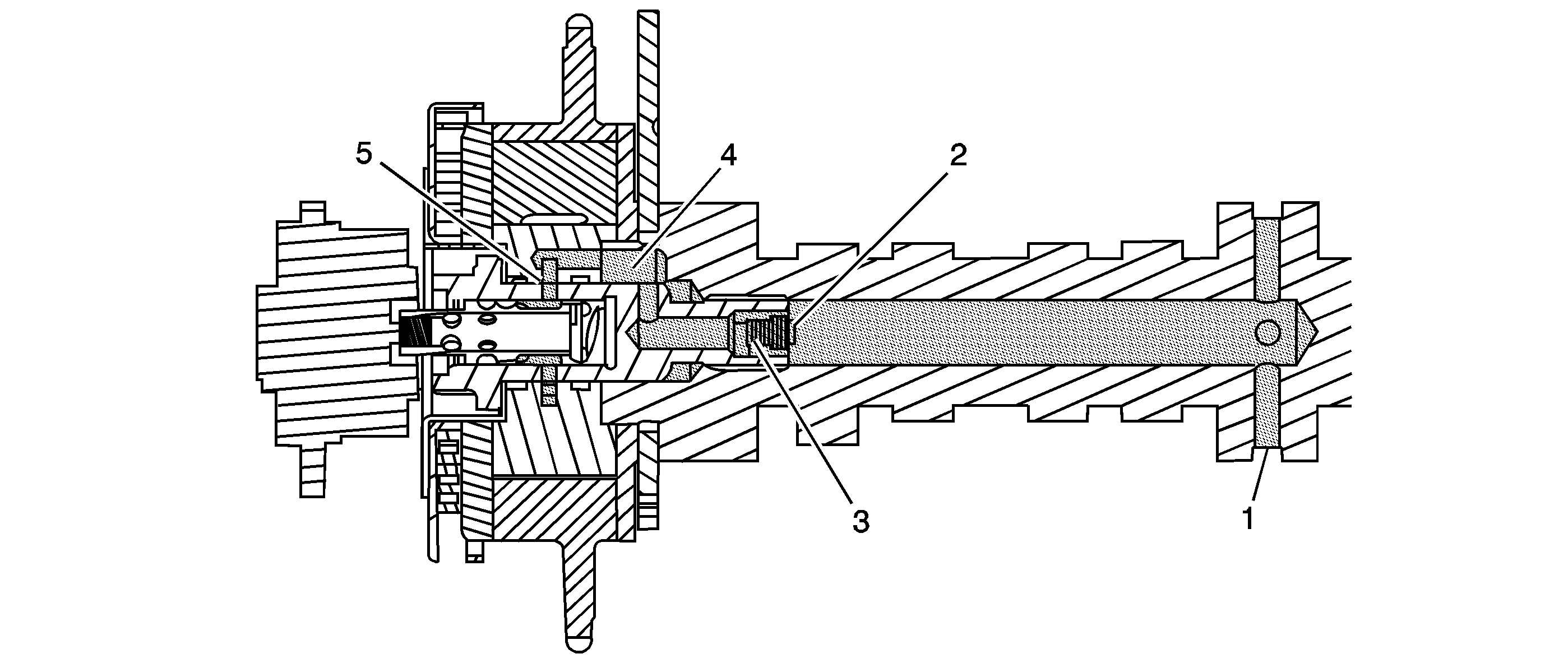
- Oil enters the camshaft at the second main bearing journal (1).
- Oil travels through the camshaft into the CMP actuator valve check ball (2) and filter (3).
- Oil exits the valve and travels through the internal passages of the camshaft (4).
- Oil exits the camshaft and enters the actuator oil entry ports.
- Oil travels through the actuator and is directed back into the valve (5).
- Valve spool position directs oil to the advance or retard passages of the actuator.
The valve may also, under certain conditions, be positioned in a neutral position with no flow to either the advance or retard passages of the actuator.
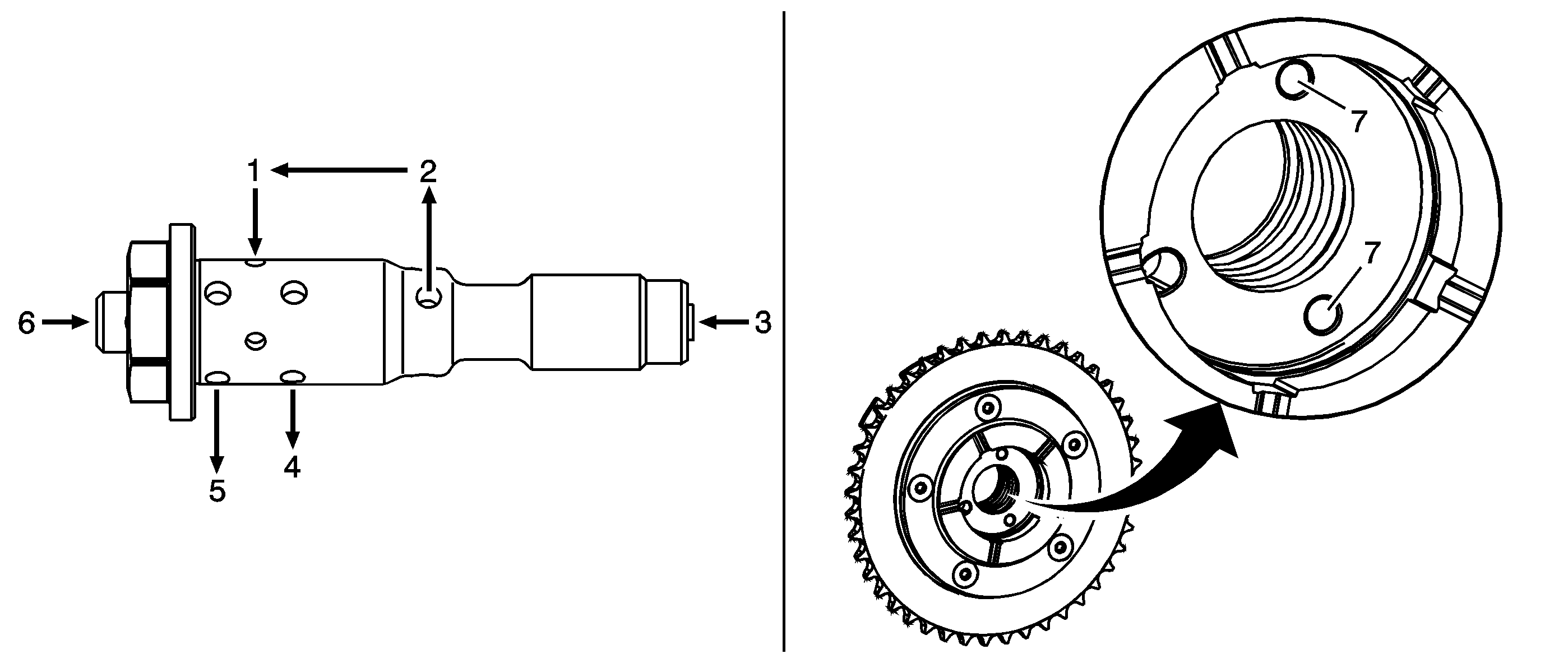
- Oil flows from the camshaft into the valve inlet (3) through the internal check ball and filter.
- Oil exits the valve (2) and travels within the internal passages of the camshaft into the entry ports (7) of the actuator.
- The center oil groove of the actuator is pressurized and oil reenters the valve (1).
- Valve spool position directs oil out of the valve advance (5) or retard (4) ports to the actuator.
The valve may also, under certain conditions, be positioned in a neutral position with no flow to either the advance or retard passages of the actuator.
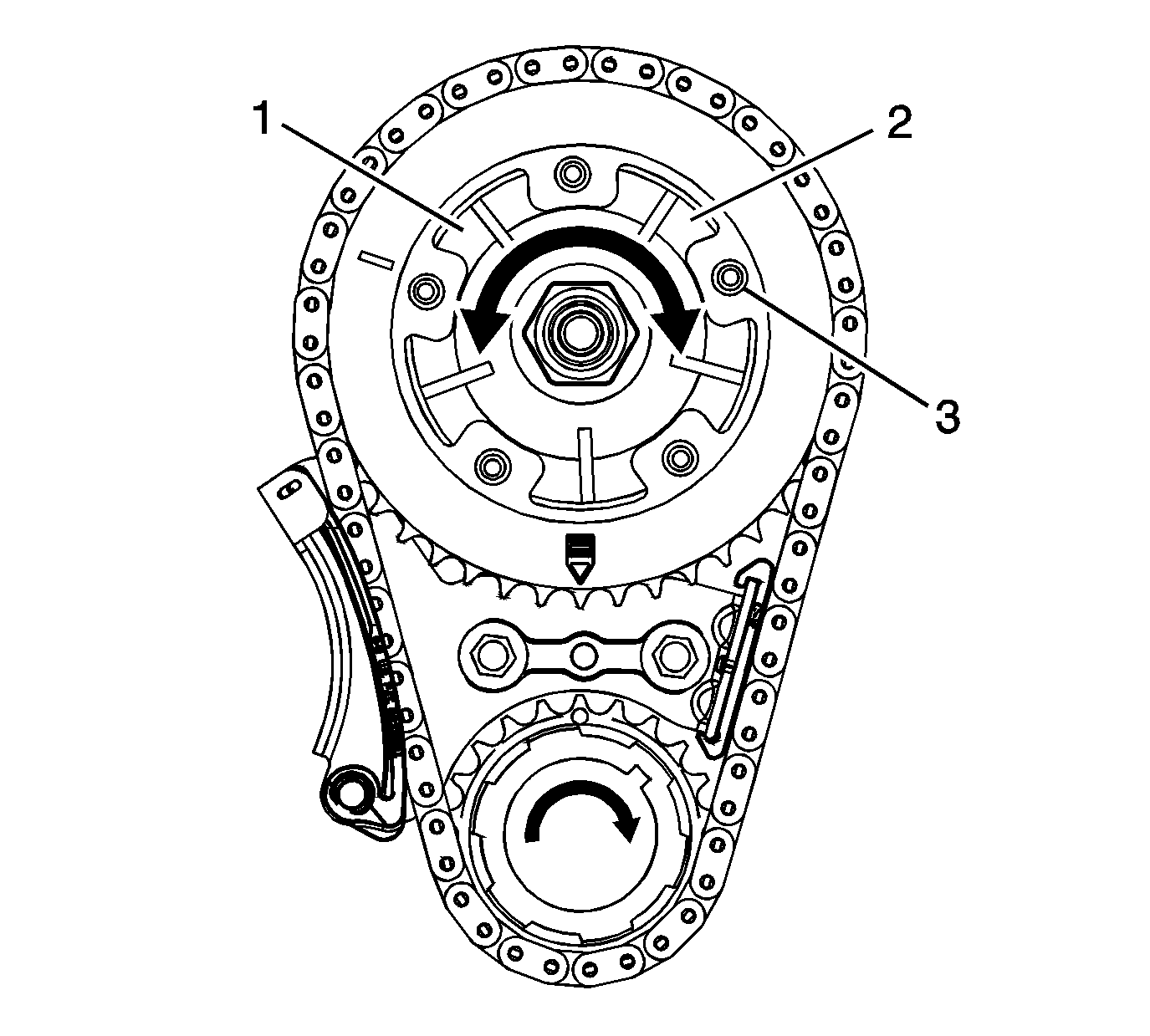
- Pressurized oil enters the retard cavities (2) of the actuator and moves the park pin (3) from the locked position.
- As pressure increases within the retard cavities (2), the rotor and camshaft rotate counter clockwise retarding valve timing.
- As the duty cycle decreases, the spool is repositioned and oil is sent to the advance cavities (1), rotating the rotor and camshaft clockwise, advancing valve timing.
| • | With a 0 percent duty cycle signal to the magnet, the spool is positioned in the fully extended position and there is full flow to the advance cavities of the actuator. As duty cycle increases to near 50 percent, flow to the advance cavities is decreased. |
| • | With a 50 percent duty cycle, the spool is positioned neutral, with no flow to either the advance and retard cavities. |
| • | With a 51-100 percent duty cycle, the spool is positioned to provide oil flow to retard cavities. As the duty cycle increases, the flow to retard cavities increases. |
| • | With a 100 percent duty cycle, there is full flow to the retard cavities of the actuator. |
| • | The above duty cycle percentage values are only a guideline, as the actual duty cycle values may vary based on engine oil temperature, solenoid magnet coil temperature, magnet coil resistance, and other specifics. |
CMP Actuator Park Position Verification

The CMP actuator can be visually inspected to determine if the tension spring has returned the reluctor wheel and rotor to the park position.
With the reluctor wheel returned to the proper parked position, the edge of the notched area of the wheel (2) aligns with the marking (1) on the camshaft sprocket.
CMP Actuator Handling Safety
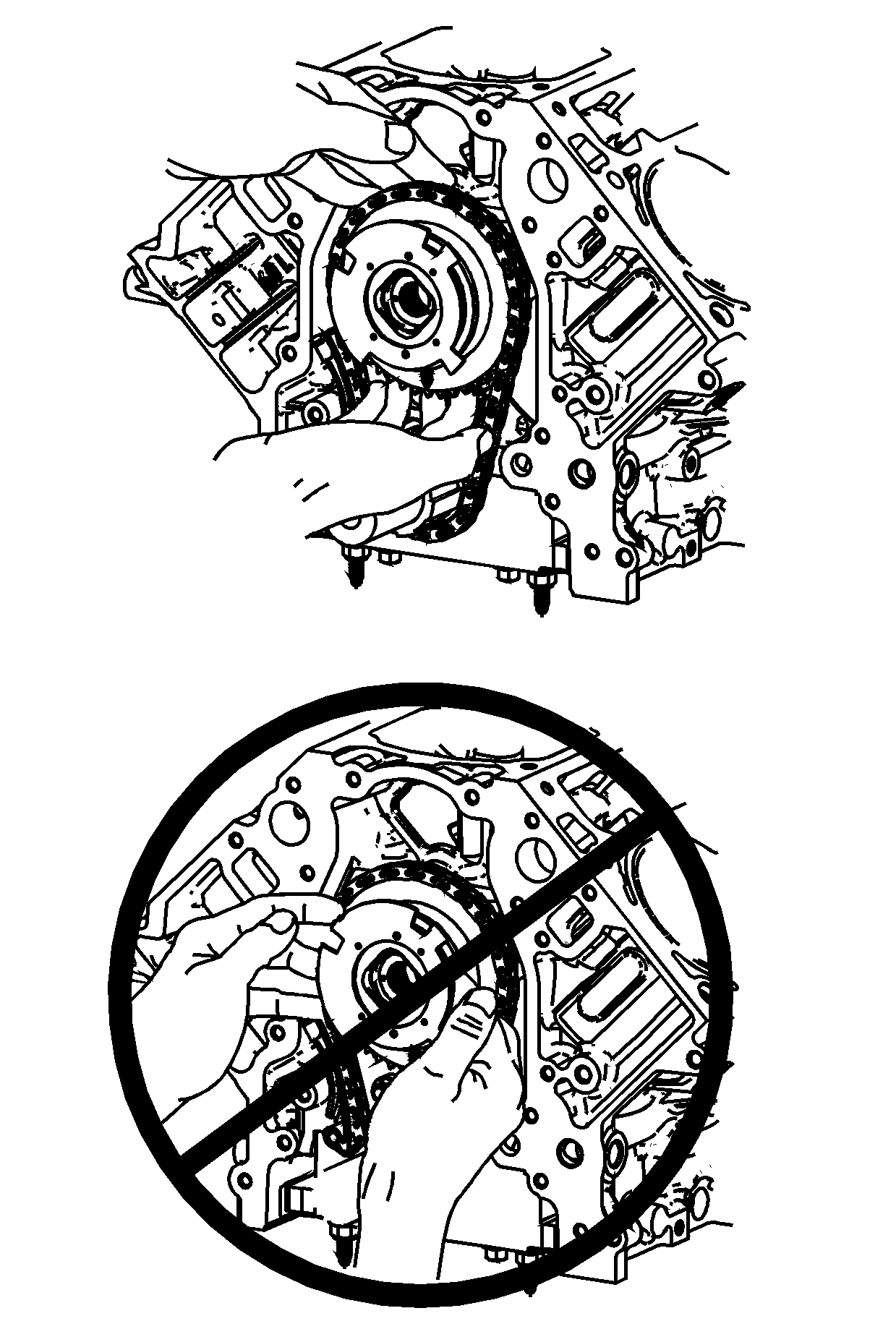
Caution: Refer to Camshaft Position Actuator Removal and Installation Caution in the Preface section.
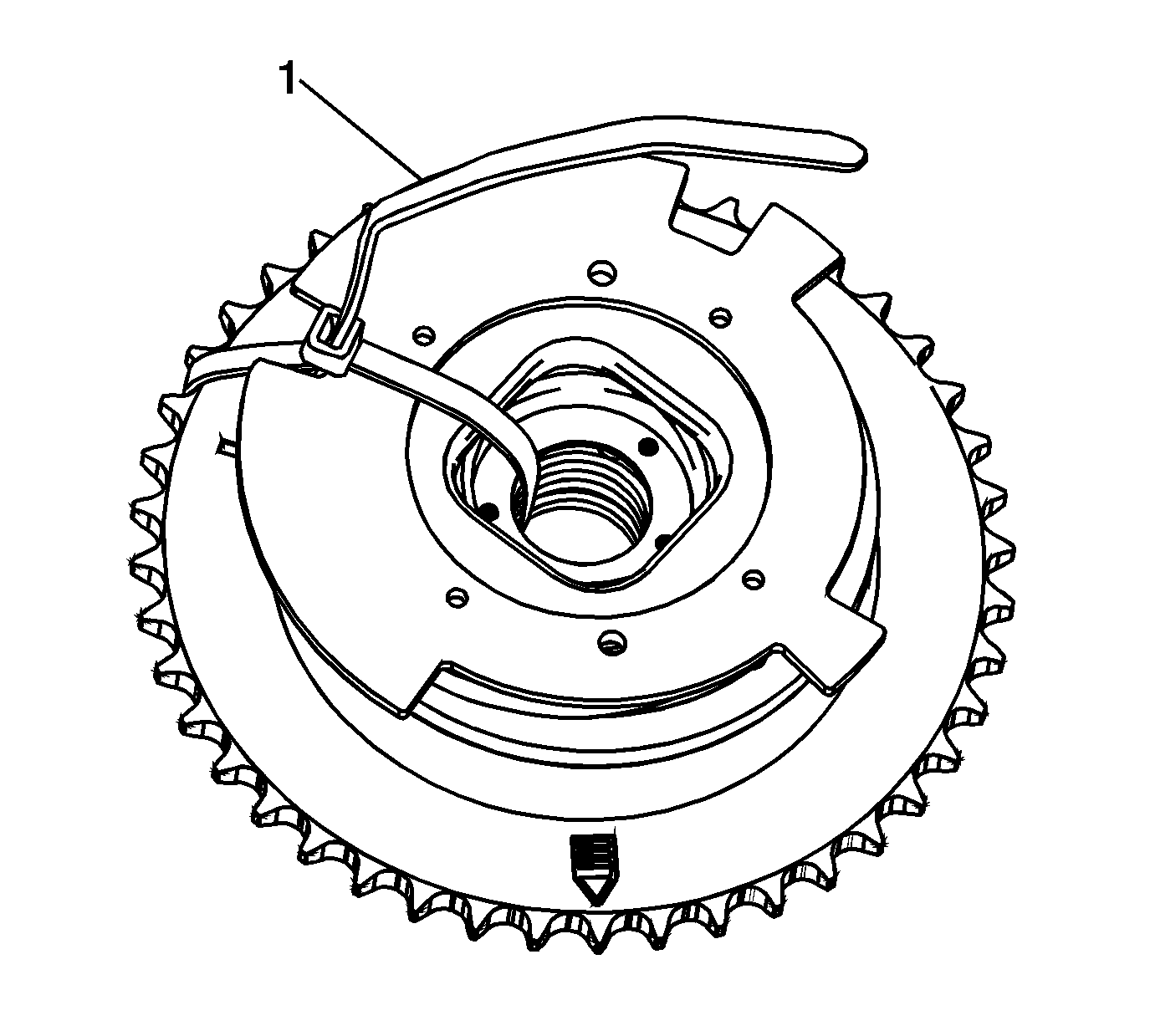
Install tie wrap (1) to retain the reluctor wheel to the sprocket. The reluctor wheel is mounted to the actuator body with 3 roll pins.
